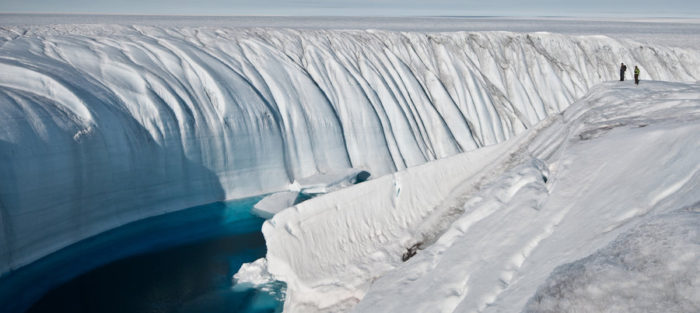In this post, I will talk about what the greenhouse gases actually are, another possible factor for global warming, and the likelihood of its past, present, and future occurrence.
First off, you know that the greenhouse effect is a possible contender for global warming, in the event that it happens. In that greenhouse effect, there are four main greenhouse gasses that make up the ‘layer’: carbon dioxide (CO2), which makes up 55% of the layer; chlorofluorocarbons (CFC) – 25%; methane (CH4) – 15%; nitrous oxide (N2O) – 5%; and ozone (O3), which is still yet to be quantified. All these gases play a big role in the reflection/absorption/retaining of the sun’s energy.
Another factor that people think could cause global warming is a rise in the carbon dioxide (CO2) levels. Since CO2 has more molecules in the greenhouse layer, this could retain more energy (heat) in the atmosphere. Thus it will cause a noticeable rise in the earth’s temperature, forming global warming. Over the last 80 years, the CO2 levels have risen. There are at least two explanations to why this has been happening:
Because of the industrial revolution, we are burning more coal, wood, and gases thus putting more carbon dioxide in the air. The result of more people on the earth (more than all other centuries put together). Since people exhale carbon dioxide, this will put more CO2 in the atmosphere.
The only thing is that global warming has not happened yet despite the fact that CO2 levels have been rising, as the temperatures are still yet to leave the average mark. This does not mean that carbon dioxide does not have an outcome on the greenhouse effect, for there are still other gases that would have to rise at the same percentage too.
I’d like to move on now to talk about the existence of global warming in the past, present, and future. I’ll begin with the past. During the medieval climate optimum (9th – 14th centuries) the temperatures were actually much hotter than those of today (well, not ‘today’, but in more recent years). Scientists have studied the results on temperature proxies; items such as tree rings, ice cores, and historical documents, that ‘record’ the temperatures over the years.
They (the scientists) have concluded that the earth is still yet to reach the medieval temperatures. There also was a little ‘ice age’ (nothing like it’s commercialized) that set in around the 15th century and lasted to about the 19th century. During these times the world cooled dramatically. Today’s “record breaking temperatures” is just the earth recovering from the “ice age”. If you compare the present temperatures over a short period of time (18th – 21st centuries), it does appear that they are indeed rising. That is why it is better to collect data from a greater distance of time to get better results.
For the present, if you look at temperature graphs, you can see for yourself that the present temperatures have hovered around average for the last hundred years. So as its definition states, global warming could definitely not be happening today.
One of the only ways of predicting a future occurrence of global warming is by computer models. A model is basically a representation of something that cannot be seen or known. Even with these, there is still no sure way of knowing what the future will bring for global warming. It may happen eventually, but there’s one sure thing: global warming is not happening now.
So, in conclusion, I hope you have learned some new things about global warming and that you will continue to observe controversies like this from a more conservative standpoint, and not just rely on what the media says. Especially so that you’ll think twice the next time you hear on the radio or in the news, “We are very certain that global warming is happening today”, and know the facts why this statement is not true.




Hi, this is a comment.
To get started with moderating, editing, and deleting comments, please visit the Comments screen in the dashboard.
Commenter avatars come from Gravatar.